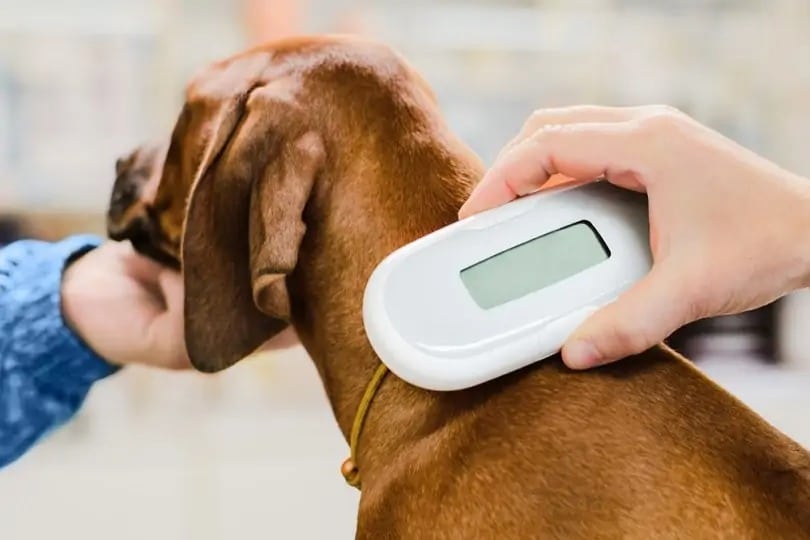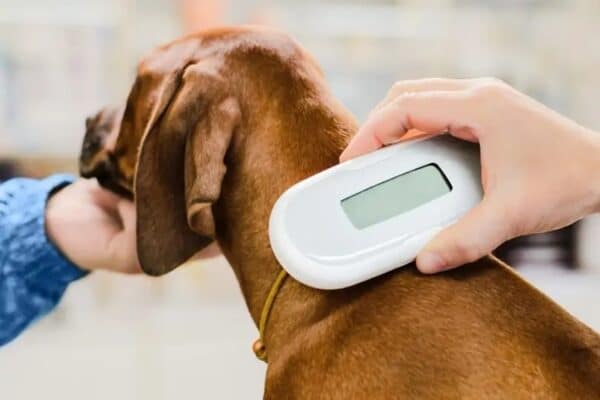Dog parents know there are always plenty of things to worry about when it comes to their pups. What if their dog eats something toxic? What if they get lost or run away from home? Something you might not have considered as a concern (but absolutely should) is whether or not your pet could be stolen.
Dog theft has been on the rise, and the recent pandemic only exacerbated the situation1. Dognapping keeps increasing; it’s estimated that roughly two million canines are stolen every year2! Since people are stealing dogs more and more often, it’s essential that you take necessary precautions with your pet.
Here are a few clever ways to help prevent your dog from being stolen. Most are simple, and all can help your pup stay where they should.

The 12 Methods to Prevent Your Dog From Being Stolen
1. Have extensive proof of ownership.
You need to have extensive proof of ownership on hand just in case your dog gets lost or stolen. The proof you’ll need to prove your dog is yours could include pictures of you and your dog, adoption papers, or vet records. This tip may not prevent your pet from being stolen, but it can help you regain them.

2. If your dog is neutered, add that to their tag.
Has your dog been fixed? Then, you should consider adding that information to the tag on their collar. That might seem like an odd way to help prevent your pup from being dognapped, but there’s a good reason why that info would be beneficial on their tag. Why is that? Often, those who are stealing dogs are doing so to turn around and sell them to puppy mills. If your pup is neutered, they won’t be of use to a puppy mill, lowering their risk of being taken.
3. Microchip your dog.
Collars and tags are great, and your dog should be wearing them. However, a collar with a tag on it can, in most cases, be removed in seconds, so they won’t help identify a dog who has been stolen. Microchips, though, aren’t so easily removed. Plus, not only can they be used to properly identify your dog, but microchips are also another thing that proves you own your dog. Best of all, canines who have microchips are reunited with their families far more often than dogs who don’t have them3.
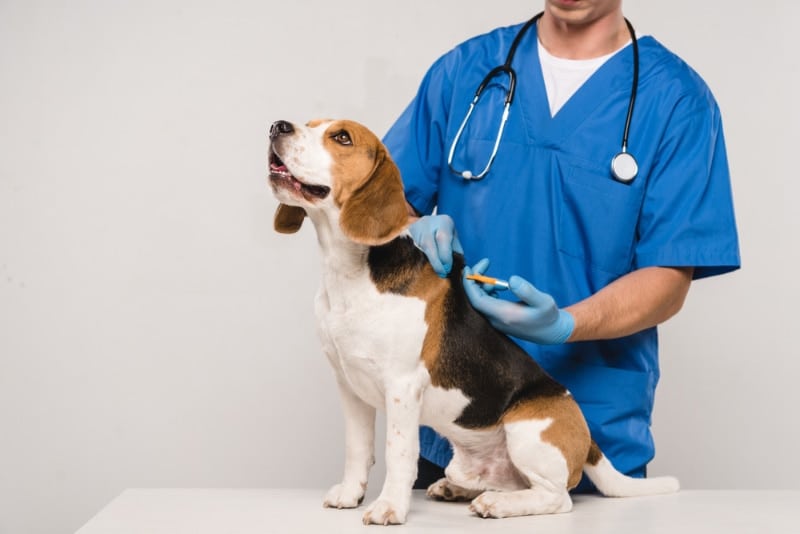
4. Or use an anti-theft collar.
While a collar with GPS tracking comes in handy if your dog goes missing, an anti-theft collar may prevent them from being stolen in the first place. What is an anti-theft collar? These collars (and harnesses and leashes) are reinforced with steel, making them a challenge to cut through, and typically have locks. Since most dognappers simply grab a canine, remove the collar, and toss it to the side, the fact that an anti-theft collar may not come off could be a deterrent. The downside to the anti-theft collar is that it’s heavier than a regular collar, so it might not be suitable for smaller pups.
5. Use a GPS tracking collar.
You might want to use GPS tracking with your pup. You can find collars that use GPS tracking technology, which could bring you a step closer to finding a stolen dog. It’s true that if someone steals your pet, they’ll likely remove the collar at some point, but even if they do, you’ll still have an idea of where your pet was last. And, if you start tracking your dog the moment you notice them missing, you might even be able to catch them.
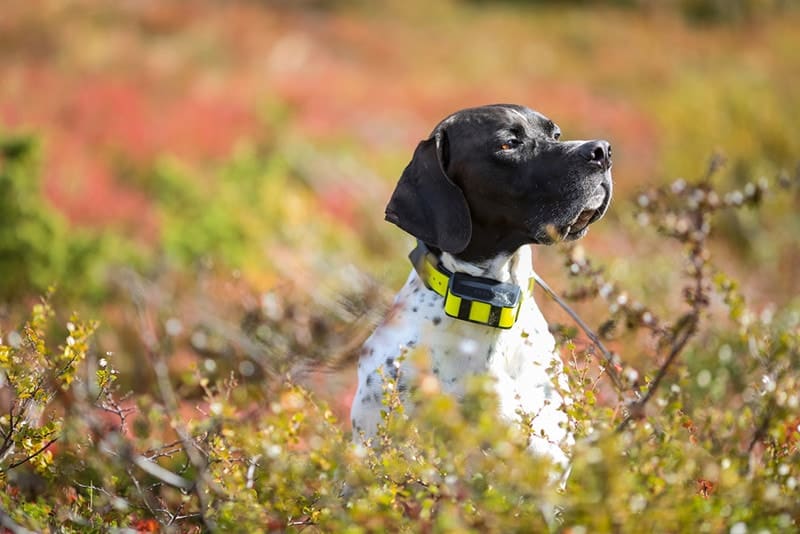
6. Mix up your walking route.
Sometimes, a person will watch you and your dog before they attempt a dognapping so they can figure out your daily routines. That’s why it’s important that you switch up the walking route you and your pup take each day. Walking the same path at the same time every day means it will be much easier for a person to steal your dog, as they’ll know exactly when to expect you to walk by.
7. Be wary of strangers.
In the same vein, you want to be wary of strangers you meet on your walks with your dog. Yes, it’s always nice to have someone stop and compliment your furry friend, but if that person seems overly interested in your pup, they may not have good intentions. You don’t need to be paranoid when meeting people on your daily walk, but don’t offer up too much information about your pet to any strangers you meet. (You might also want to consider walking with a friend, as there’s safety in numbers!)
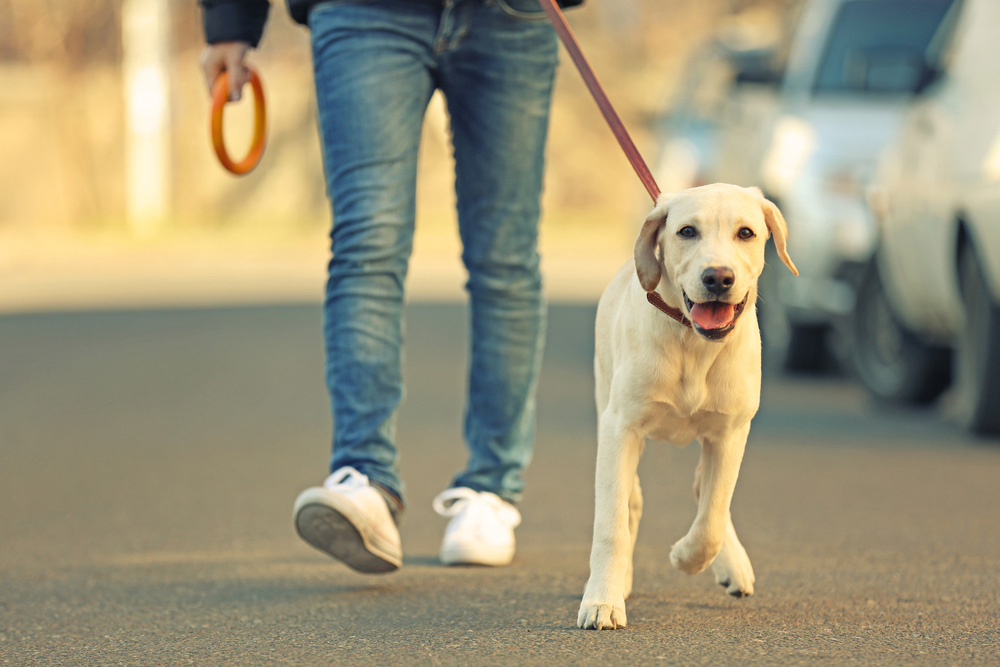
8. Always be aware of your surroundings.
You should always be aware of your surroundings when you’re out and about with your canine companion. If it’s just you walking your dog, it can be tempting to talk on the phone at the same time or browse online. But doing these things takes away your awareness of what’s happening around you, which means you might not notice a car following you or someone running up to you. Stay alert!
9. Never leave your dog alone in the car.
Most people would never dream of leaving their dog in the car because of the risk of overheating. But what if you’re running into the gas station for five minutes or less? That should be fine, right? Nope, and not because your dog might get too hot. Dogs left in cars are much too easy for dog thieves to steal (even if your doors are locked). Not only could your pet get dognapped, but they could become an unintended victim if someone decides to steal your car. In the first half of 2022, the National Insurance Crime Bureau (NICB) found there were nearly 500,000 vehicles stolen!
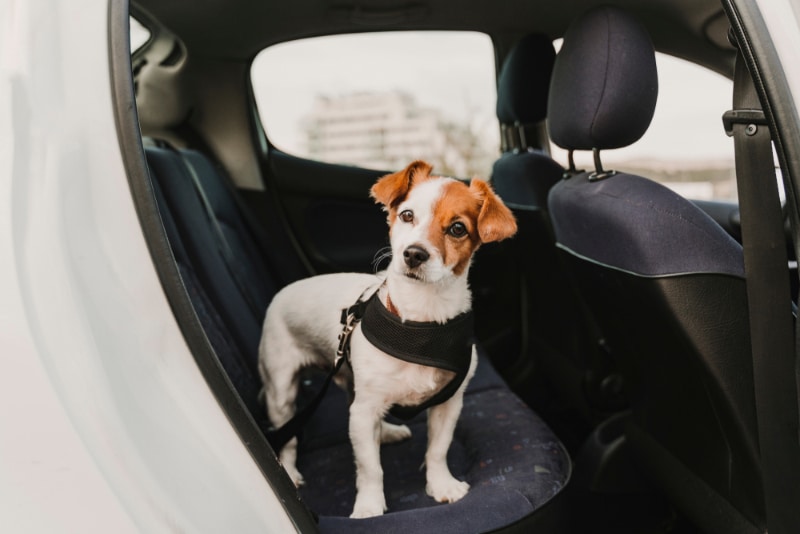
10. Don’t leave your pet alone in the yard.
You might think your fenced-in backyard is perfectly safe for your dog to hang out in alone (especially if you’re home), but that isn’t always the case. A fence won’t deter a thief who is determined, and even if you’re inside the house, you might not be watching your dog every minute they’re outside, so someone could steal them. And it’s never safe to leave your pup in the backyard if you’re going to be away from home!
11. Don’t post warning signs around your home advertising your dog.
You may think posting signs around your home that say things like, “Warning! German Shepherd on property!” might keep those with bad intentions away, but in reality, you may just be advertising your dog to potential thieves. This is particularly true if you own a dog breed that is one of the most commonly stolen ones. So, it’s best to avoid posting any signs around your home that indicate you have a canine on the premises.
12. Do install a security system with a camera outside your home.
A great way to prevent your dog from being stolen (or get them back more quickly if they are stolen) is to install a security system in your home that has a camera facing the yard. Cameras in the house are good, too, but if someone is going to steal a dog, they’re probably going to simply snatch the dog from the yard. If you have cameras set up outside your home, then if you’re indoors and keeping an eye on your dog while they’re outdoors, you’ll notice if someone enters the yard. And if the worst happens and your pup is stolen, you’ll have a record of who did it.
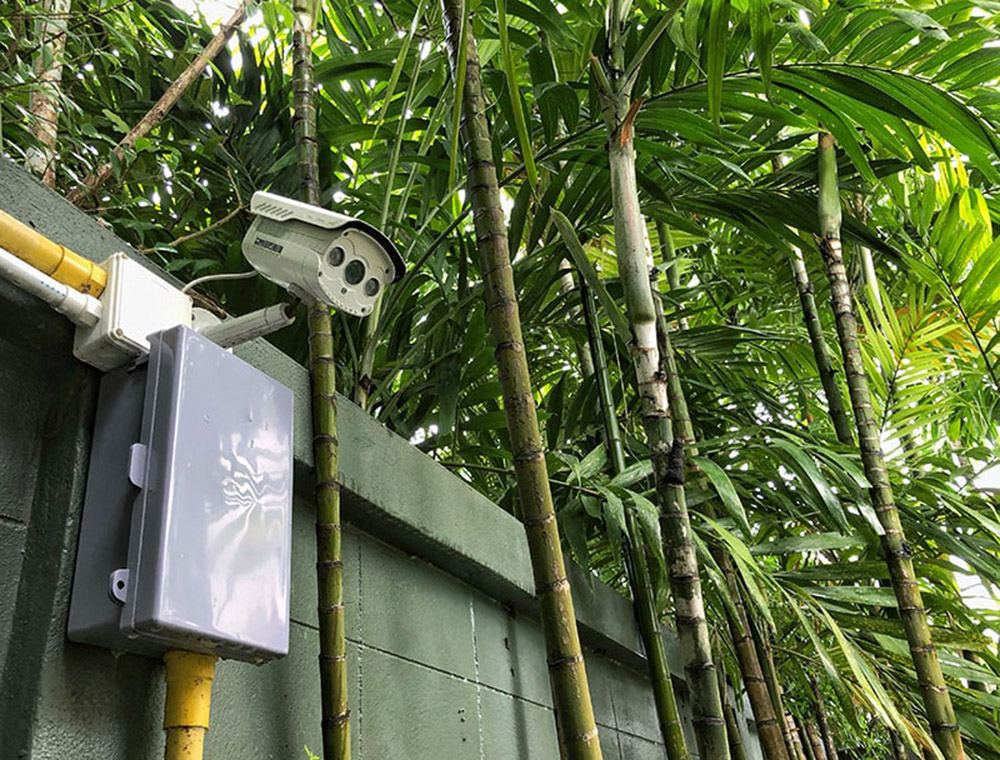
Why Do People Steal Dogs?
Why do people steal dogs? The most common reason someone steals a dog is to make money. If your pup is a purebred, they can be sold to a puppy mill or re-sold to another person for a profit. Or someone might snatch your pet, then bring them back to you after you’ve offered a reward for information or their return. If you have a larger dog, someone may steal them to try and sell them to a dog fighting ring. Finally, some people might steal canines to sell them to companies for medical research.
Which Breeds Are Stolen Most?
Certain dog breeds are more prone to being stolen than others (particularly those that are purebred).
The breeds most commonly taken include:
This doesn’t mean if your dog is a different breed than these, there’s no chance of them being stolen; only that these breeds are more likely to be dognapped.
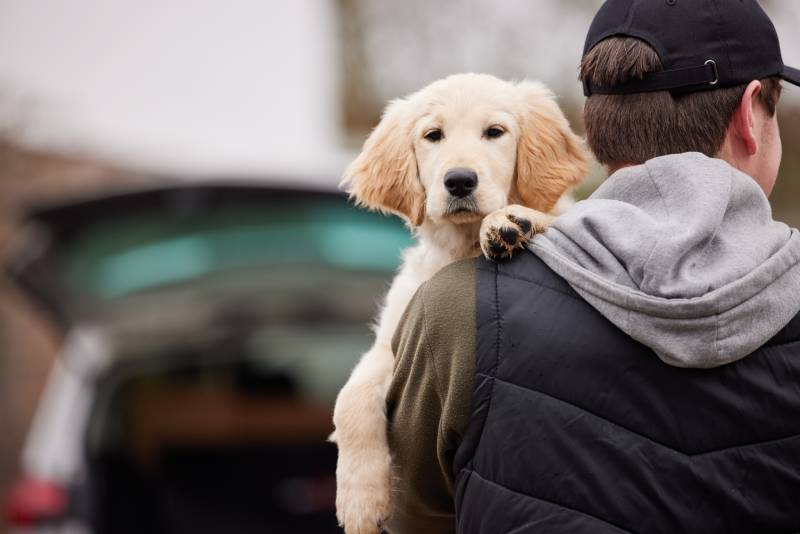

Conclusion
Having your canine companion stolen is a heartbreaking experience, but it’s one you are more likely to avoid by utilizing the methods above. Always keeping a close eye on your dog, ensuring they are well-documented, and investing in a GPS or anti-theft collar are just a few of the steps you can take to protect your pup. If the worst happens, though, there are also things you can do to help you get your pup back sooner rather than later.
Featured Image Credit: olgagorovenko, Shutterstock
Contents
- The 12 Methods to Prevent Your Dog From Being Stolen
- 1. Have extensive proof of ownership.
- 2. If your dog is neutered, add that to their tag.
- 3. Microchip your dog.
- 4. Or use an anti-theft collar.
- 5. Use a GPS tracking collar.
- 6. Mix up your walking route.
- 7. Be wary of strangers.
- 8. Always be aware of your surroundings.
- 9. Never leave your dog alone in the car.
- 10. Don’t leave your pet alone in the yard.
- 11. Don’t post warning signs around your home advertising your dog.
- 12. Do install a security system with a camera outside your home.
- Why Do People Steal Dogs?
- Which Breeds Are Stolen Most?
- Conclusion

